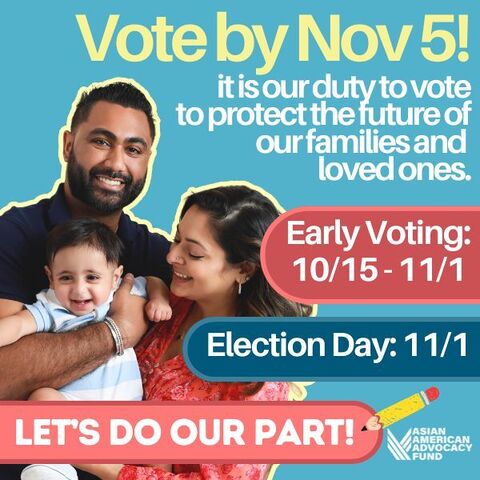Letters from Readers
Autism is one small word, but it changes everything for the whole family. In September 2003, my son was diagnosed at age two years and nine months. After several years of interventions, therapies and special education for my son, I can say autism is not a very simple disorder. It is a core disorder that impairs the child from functioning normally but it also affects the whole family. Families affected initially go through several days, months, years of denial, depression, worry, anxiety and social seclusion. In such situations, immediate family and friends have to be their pillars of strength.
Along with the core disorder of autism, children may also be suffering from co-occurring conditions like apraxia, seizures, behavior disorders, eating disorders, sensory processing disorder, physical milestone challenges, dyslexia, hyperlexia, etc. There is not a single treatment to help promote independent living for our children, but a combination of several therapies based on each child’s ability. Support groups can play a huge role in this process. Most Indian families in the U.S. who have a child or children with autism and related disabilities really miss out essentially on support as they may be far away from their loved ones even within the country. In such situations, friends become their support system in addition to the support groups they may have become part of.
There are several roles generally played by a support group.1. Educating the family about the disorder.
2. Information about the available resources in the state they reside in: for example, special education, therapies that can help with co-occurring conditions, informational seminars through private nonprofit agencies like parent-to-parent (http://www.p2pga.com), CARD, Autism Speaks, etc.
Hima Devulapalli
by email
-------------
We need to change our isolationist habitsThis is in response to your editorial, “Welcome to Americana,” in the February issue. The vast majority of the people of Indian origin, whether they are from southern or northern India, are naturally introvert in nature. But the paradox of becoming more introvert in a society like the U.S. is perplexing.
If Indian-Americans are interested in doing more than just add to their bank accounts, they must associate with many kinds of people that live in this country, especially with Caucasian, black and Hispanic Americans that form the bulk of this society.
How many people of Indian origin take the trouble to get to know their next-door neighbor? We need to change our isolationist habits and do everything possible to merge into the society.A. S. Mathew
by email
-------------
Looking forward to new trends in Indian cuisine
On my several trips to India I have enjoyed both the delights and dangers of street food in India. I came across Chai Pani in Asheville (“Indian Restaurants: Going for Hip,” February issue) and it is a fine place, with excellent food and a very friendly wait staff. Now I will have to drive to Chapel Hill and sample the Curry Blossom Café.
Ann Arbor might be further off but thanks for the tip. Two years ago I came upon three college students selling spicy bits at a Baltimore street fair. That was fun and my first view of this trend. At Chai Pani what struck me was the combination of quality ingredients and stylish preparation. No doubt Hut-K Chaats and Curry Blossom Café are similar restaurants of fine quality. Thank you for the headsup and the opportunity to enjoy some fine Indian food close to home!Mdhay271
Online Comment
-------------
Narrow-minded rituals prevent assimilationWe Indians always live isolated, ghetto-like lives no matter where we immigrate. Remember, before people started immigrating to the U.S.A. and U.K., they had already immigrated to African countries like South Africa, Uganda and Kenya?
I had heard at that time that in these countries most of the signs on the railway stations, bus stops and stores were in two languages—English and Gujarati! But in 1969 Idi Amin kicked all Indians out of the country. Eventually, these Indians immigrated to the U.K., Canada and U.S.A., settled down, and prospered.
In the last 40 years we have witnessed that Indians still live in ghettos in big cities (Leicester in the U.K. and Hoboken in New Jersey) and they do not assimilate into the American or British society. We have many places that we call “Little India.” We also brought our narrowminded, silly rituals along with us. We show off our wealth by building marble temples.
This tradition may continue as long as there are more Indian people over the age of 50, but the next generation people of Indian origin who are very young are not going to follow our footsteps. At that time all the temples will be deserted and Hindu rituals will be forgotten.
Anu MehtaLilburn, Georgia
-------------
[Note: The following sentence in the February cover story (“Raising a Confident Youngster”) should have appeared as a quote by Joseph Epstein. We regret the error.
“We do not choose to be born. We do not choose our parents, ...our historical epoch, the country of our birth, or the immediate circumstances of our upbringing. ...But within all this realm of choicelessness, we do choose how we shall live.”]
========================
What’s on YOUR mind?
We welcome original, unpublished letters from our readers. You could either respond to a specific article in Khabar or write about issues relevant to our community. Letters may be edited for length and other considerations. Longer submissions by readers may be considered for the “My Turn” column.
Email: letters@khabar.com • Fax: (770) 234-6115.
Mail: Khabar, Inc. 3790 Holcomb Bridge Rd. Suite 101, Norcross, GA 30092.
Note: Views expressed in the Letters section do not necessarily represent those of the publication.
Enjoyed reading Khabar magazine? Subscribe to Khabar and get a full digital copy of this Indian-American community magazine.
blog comments powered by Disqus














